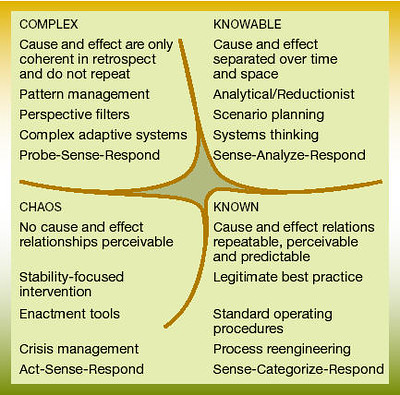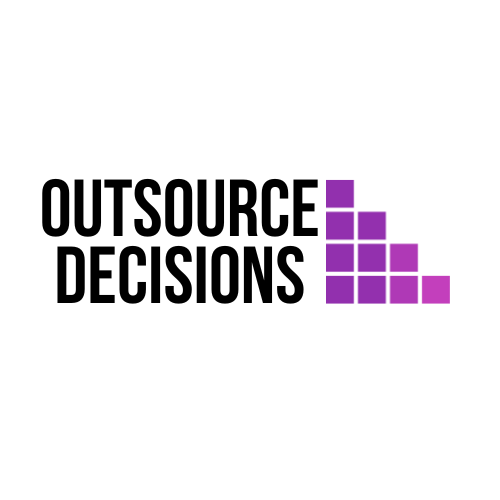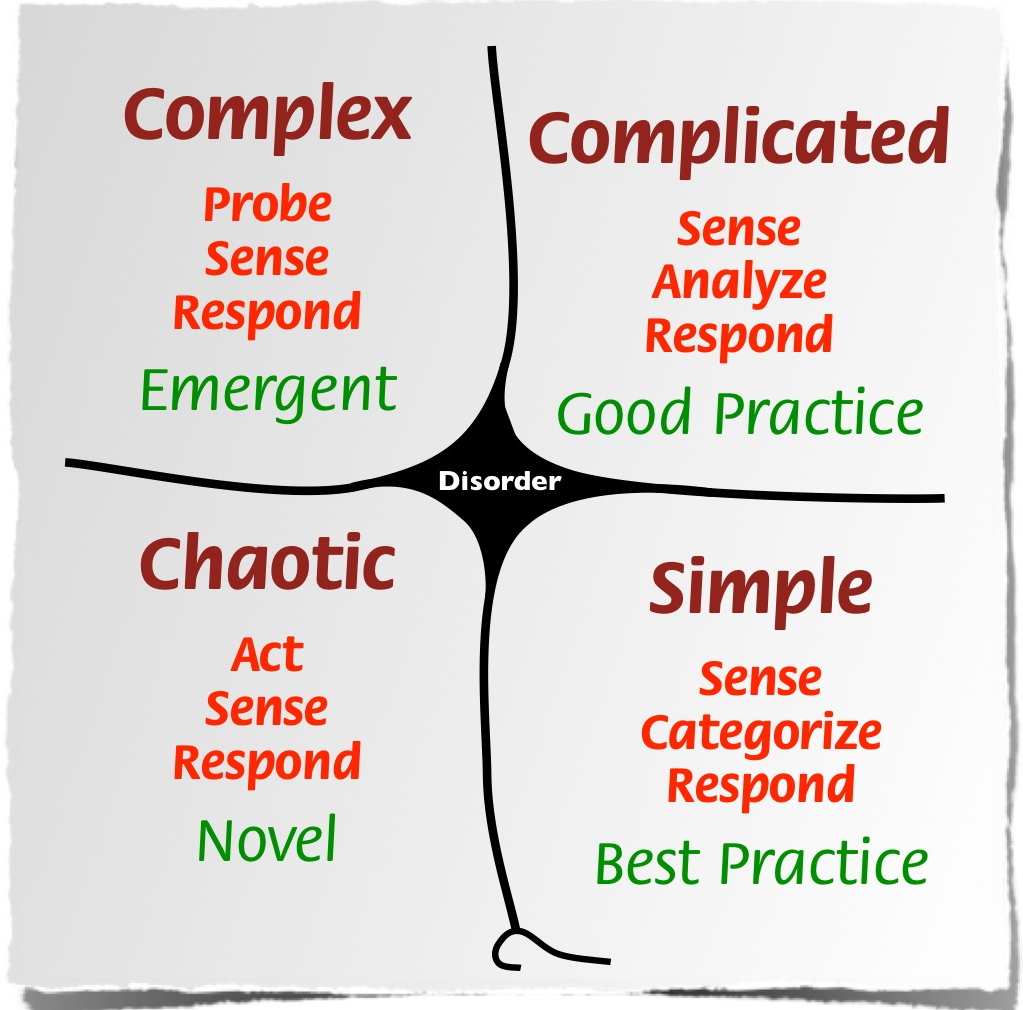Have you ever felt overwhelmed by the complexity of a situation?
Perhaps you were facing a problem that seemed too tangled to understand, let alone solve.
This is where the Cynefin framework can help. Developed by Dave Snowden, this powerful tool can guide you through decision-making, no matter how complex the circumstances.
Introduction to the Cynefin Framework
The Cynefin framework is a decision-making model that helps you understand the nature of the problem you’re facing. It divides problems into four domains: simple, complicated, complex, and chaotic. Each domain requires a different approach to decision-making and problem-solving. By identifying the domain your problem falls into, you can choose the appropriate strategy and increase your chances of success.
The name “Cynefin” comes from a Welsh word that means “the place you are familiar with” or “the habitat.” The framework is designed to help you navigate unfamiliar territory and make sense of complex situations.

The Four Domains of Cynefin
The Simple Domain
Clear cause-and-effect relationships characterize the simple domain. Problems in this domain are well-defined, and the solutions are known. Think of a recipe or a set of instructions. If you follow the steps correctly, you’ll get the desired outcome.
Examples of problems in the simple domain:
- Following a recipe
- Assembling flat-pack furniture
- Performing routine procedures
The Complicated Domain
The complicated domain deals with more complex problems but still has a clear relationship between cause and effect. These problems can be broken down into smaller parts and analyzed. Once you understand the components, you can apply good practice to find a solution.
| Simple Domain | Complicated Domain |
|---|---|
| Clear cause-and-effect relationships | Complex but analyzable problems |
| Known solutions | Require expertise and good practice |
| Follow a recipe or set of instructions | Break down into smaller parts |
The Complex Domain
The complex domain is where things get really interesting. Problems in this domain are unpredictable, and there is no clear cause-and-effect relationship. You can’t analyze these problems in the same way as complicated problems because the elements interact in unpredictable ways.
Think of a rainforest ecosystem or the stock market. There are too many variables and interconnections to fully understand and predict the outcome.
The Chaotic Domain
The chaotic domain is where things are spinning out of control. There is no discernible pattern, and cause-and-effect relationships are impossible to determine. Think of a natural disaster or a crisis situation. In these cases, you need to act quickly to restore order before you can start making sense of things.
Using the Cynefin Framework
The first step in using the Cynefin framework is to identify which domain your problem falls into. This will help you choose the appropriate approach to decision-making and problem-solving.
For simple problems, you can follow the best practices or a set of rules. Complicated problems require expert analysis and the application of good practice.
In the complex domain, you need to experiment and probe the system to understand how it behaves. You can’t rely on experience or expert knowledge because the situation is unpredictable.
For chaotic problems, your priority is to regain control and stabilize the situation. Once you’ve done that, you can start making sense of what happened and plan your next steps.
Benefits of the Cynefin Framework
The Cynefin framework offers several benefits:
- Clarity: It helps you understand the nature of the problem you’re facing and choose the appropriate approach.
- Flexibility: The framework is flexible enough to handle a wide range of situations, from simple to chaotic.
- Decision-making: It guides how to make decisions in each domain, reducing the risk of making poor choices.
- Communication: The framework provides a common language for discussing complex problems and decision-making processes.
- Adaptability: The framework encourages you to adapt your approach as the situation changes, rather than stubbornly sticking to a fixed plan.
Limitations and Criticisms
While the Cynefin framework is a powerful tool, it’s important to recognize its limitations:
- Subjectivity: Determining which domain a problem falls into can be subjective, and different people may have different perspectives.
- Oversimplification: The framework divides problems into four distinct domains, but reality is often more nuanced and complex.
- Lack of Guidance: While the framework provides a general approach for each domain, it doesn’t offer specific instructions on how to solve problems.
- Context Dependence: The framework may not be universally applicable, and its usefulness may depend on the specific context and culture.
Despite these limitations, the Cynefin framework remains a valuable tool for decision-making and problem-solving, especially in complex and uncertain situations.
Q&A
Q: How do I determine which domain my problem falls into? A: To determine the domain, consider the nature of the problem and the relationships between its components. Simple problems have clear cause-and-effect relationships, complicated problems are complex but analyzable, complex problems are unpredictable, and chaotic problems are out of control. You can also try probing the system and observing how it responds.
Q: Can a problem move between domains? A: Yes, a problem can shift from one domain to another as the situation evolves. For example, a complex problem might become chaotic if a crisis occurs, or a chaotic situation might stabilize and become complex or complicated. The Cynefin framework encourages you to adapt your approach as the circumstances change.
Q: Can the Cynefin framework be applied to all types of problems? A: While the Cynefin framework is a versatile tool, it may not be universally applicable. Some situations may be too specific or context-dependent for the framework to be useful. Additionally, the framework is primarily focused on decision-making and problem-solving, so it may not be suitable for other types of tasks or activities.
Q: How can I learn more about the Cynefin framework? A: There are several resources available for learning more about the Cynefin framework. You can read Dave Snowden’s original paper introducing the framework, or check out books and online courses on the topic. Additionally, there are many case studies and examples of how organizations have applied the framework to real-world problems.





